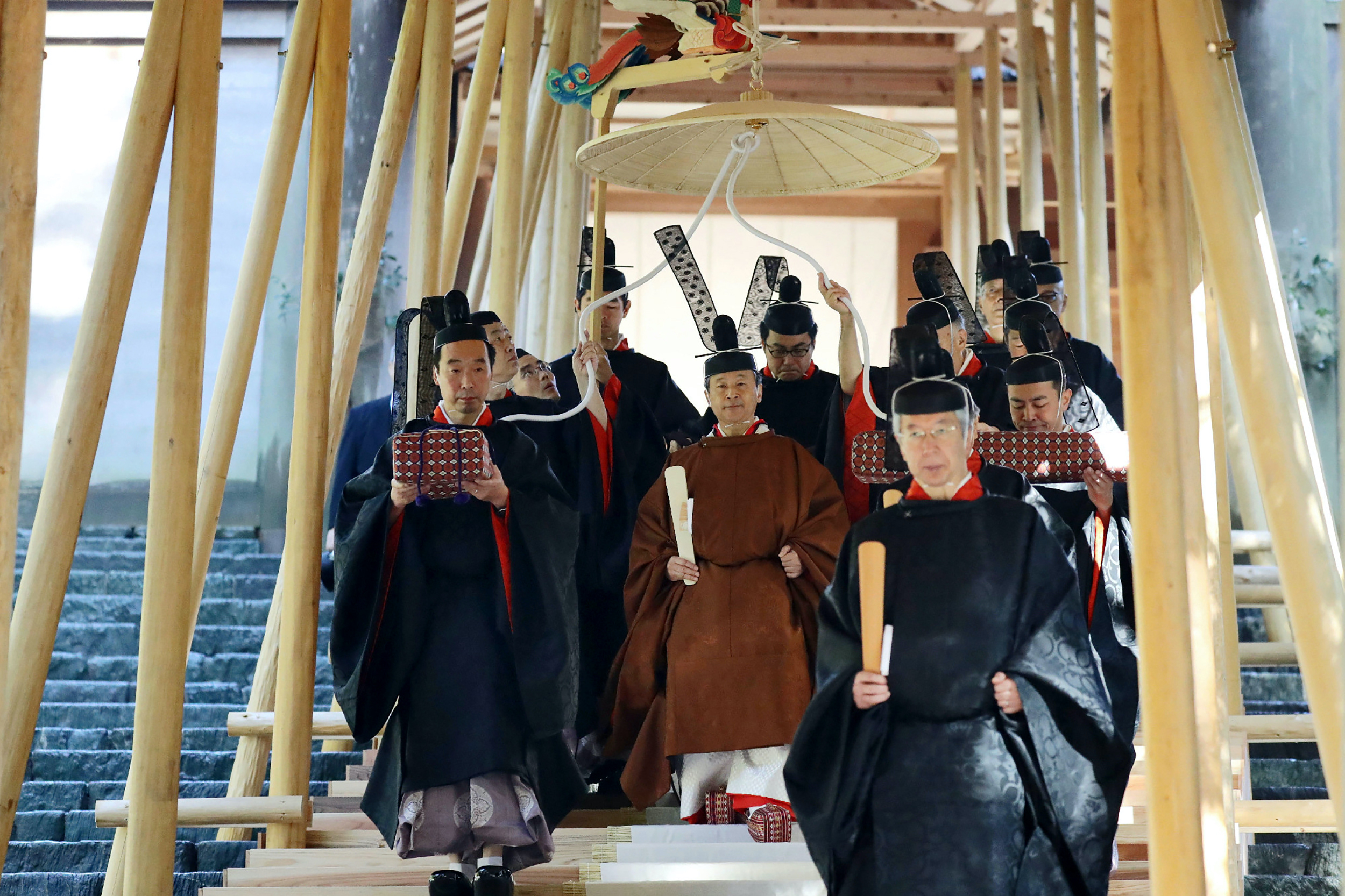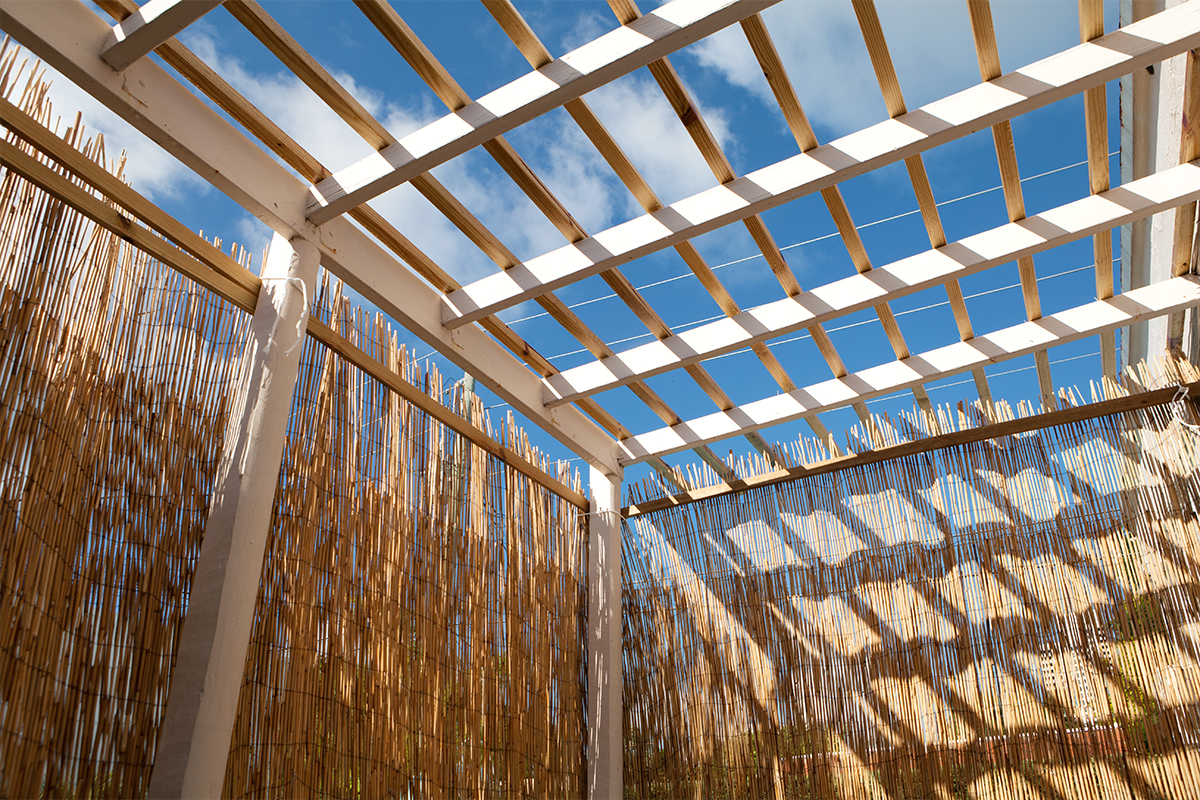Growing up in the temperamental weather of Denver, Colorado, it was not at all unusual to experience rain, high winds, heat waves, or even snow on Sukkot, the Jewish harvest festival that typically falls in September or October. Some years even saw all of these dramatic weather conditions over the course of the week-long holiday. This always made the exercise of building a sukkah, a temporary and fragile structure to “dwell” in for the week, feel all the more absurd.
And yet, Sukkot has always been my favorite holiday. At its core, the exercise of building and being in a sukkah is one of both trust and humility. While we try our best to construct a sukkah that is stable, we don’t go to extraordinary lengths to fortify it; impermanence and fragility are a feature, not a flaw. We design our sukkot to be easily disassembled and reassembled each year, often replacing materials such as the natural roof, or s’chach, with time. This annual ritual of (re)construction is also a celebratory moment, an opportunity to acknowledge the cyclical nature of Jewish time and life.
When I was in architecture school, we learned about the Ise Jingu Shrine in Japan, which has been ritually deconstructed and reconstructed on two alternating sites every 20 years for over a thousand years. This practice is designed explicitly to preserve the knowledge of traditional Japanese wood joinery techniques and craft as well as the physical condition of the structure itself. In designing something to be temporary, and crafting it out of renewable materials (in this case lumber grown in vast forests surrounding the site of the shrine), a far greater permanence is achieved. Ultimately, the ritual lasts much longer than any building or structure constructed only once, regardless of how impenetrably it was designed, can.

The similarities and shared wisdom of this shrine and the sukkah are evident. These examples of ancient construction knowledge and ritual run counter to everything else we think we know about architecture. We tend to think of construction as an exercise in dominance over the environment, an attempt to protect ourselves from the natural forces of weather and erosion.
But the impulse to build bigger, stronger, more monumental, and longer-lasting structures is one of the most direct and harmful contributors to our current climate crisis. Today, concrete is the most widely used construction material globally, accounting for approximately 8% of carbon emissions worldwide. More broadly, nearly 40% of global carbon emissions are a result of building construction and operation. The combative attitude that most of our structures express towards the environment is quite literally destroying it in real time at this very moment.
Conversely, on Sukkot we acknowledge that no construction endeavor is ever so enduring. We recognize uncertainty and vulnerability as fundamental to the human experience. We do not allow ourselves to be fooled into thinking that building something strong enough to resist the weather outside makes us impervious to the more pervasive element of time. A sukkah does not attempt to resist these conditions; it tenuously embraces them. It is in this very act of humility, in recognizing the need for continuous rebuilding, that the ritual remains enduring. There are few structures in the world older than the practice of building sukkot on this week of each year.
When I teach about Sukkot to my religious school students, we talk about leaving our homes for the fragility of the sukkah as a metaphor for venturing outside of our comfort zones. The vulnerability of the holiday challenges each of us to leave what we know — what is easy — for an opportunity for growth. I would argue that this is an urgent and timely lesson, not just for Jewish people, and not just this week.
The reality of climate change is that it will make almost all of us a whole lot less comfortable over the coming years and decades. With unprecedented forest fires, floods, hurricanes, and other natural disasters across the United States and world, our current condition is requiring us to drastically reconsider the ways we live and interact with our environment.
Acting with humility and acknowledging our vulnerability may mean accepting a broader range of temperatures as “comfortable” on our thermostats or resisting the convenience of personal car ownership. More importantly, however, this will require us to act not just as individuals but as a collective through policy and structural change to resist the tendencies of human ego toward building bigger and stronger and more destructive societies.
On Sukkot, and all year, we should remember that endurance is achieved not through material monumentality, but through the much more nebulous constructions of the social: tradition, interpersonal connection, ritual, and celebration.
So this year, when I bundle up in extra layers and blankets to brave a brisk autumn evening for a holiday dinner, I will take an extra moment to appreciate the insight of our ancestors. As I take in the familiar sound of wood-framed canvas walls gently swaying, the smell of pine branch s’chach overhead, and the glimpse of a full moon through its needles, I will consider how our tradition has always recognized the means to a healthy, livable, harmonious, and enduring, if uncertain, future.
Header image by tovfla/iStock/Getty Images.



